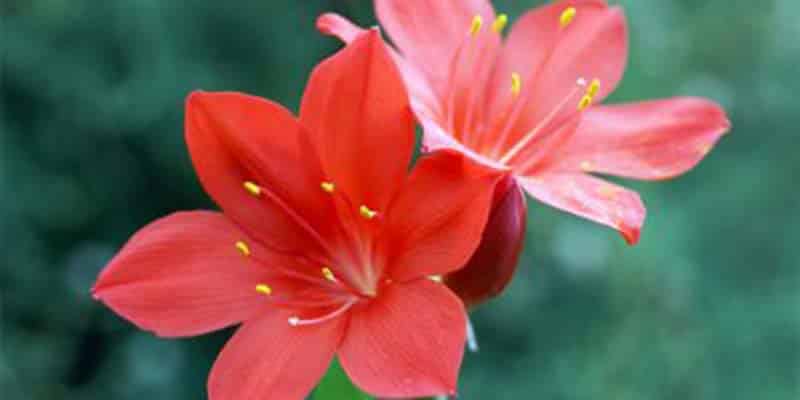By Marilyn Medina Ribeiro
Autumn in mediterranean regions is a magical time of year. Following the long summer hibernation, the plant world is coming to life. Shorter daylight hours, dewfall at night, and a drop in temperature are all triggers for plant growth.
Green tips appear on bushes that seemed almost dead and flowers, especially those of bulbs, take advantage of the changes and the promise of rain to start their life cycle.
Bulbs are possibly the most sensible things you can plant in a mediterranean climate, doing all their growing while conditions are good, then sleeping away the summer. They are also some of the most spectacular.
Some bulbs – Amaryllis, Hippeastrum, Crinum – produce glamorous flowers which hint at the size of the bulbs underground, often dozens of centimetres in circumference. Others – Crocus, Narcissus, Tulipa – are delicate and subtle, but no less lovely for that, and can be employed to great effect en masse in meadow or woodland. The variety of bulbs which thrive here is staggering, and the following is a tiny taste of this abundance.
Narcissus papyraceus, Paperwhite narcissus
Many of us know this as an indoor bulb grown on a windowsill and flowering at Christmas, but it is native in the Algarve. The fragrant flowers are good for cutting and last a long time if left on the plant. A good rule of thumb for choosing mediterranean-climate-compatible narcissi is size; species with smaller flowers, e.g. cultivars such as “Hawera” and “Tete-a-Tete”, tend to do well here.
Scilla peruviana
Scilla peruviana
Scilla peruviana, Portuguese squill
Despite the Latin name (so the story goes, the great botanist Linnaeus was given specimens imported from Spain aboard a ship named Peru, and assumed from their exotic appearance that they came from the latter country), this spectacular bulb is a Portuguese native species. In my experience, it is unfussy about its position, but in the wild they are most commonly seen underneath or at the edges of trees and scrub. A nice subject for a pot but truly dramatic in a large group.
Sternbergia lutea, Yellow autumn crocus
The flowers of this bulb appear almost overnight with the first decent rainfall. Sunny yellow cups are followed by attractive strappy, glossy-green leaves. As the common name suggests, its form is like a large crocus, to which it is related.
Amaryllis belladonna
“Amaryllis” is more usually applied as a common name to the genus Hippeastrum (see below), but this is one of only two species of true Amaryllis. Appearing at the very end of summer before the leaves, the many-flowered stems are like ready-made posies, as surprising as they are elegant.
Hippeastrum cultivars
Another plant familiar from our northern European windowsills, Hippeastrum is what most of us think of when we hear Amaryllis. They do just as well in pots here, but they are also happy to grow in the ground, where they will develop larger leaves and more flowers per stem. There are many species and hybrids, whose colours vary from white to pinks soft or violent, to stripy ones, orange ones, and dark purply-black ones.
Tulipa sylvestris, Woodland tulip
There is something decidedly elven and otherworldly about Tulipa sylvestris. They are, however, as tough as the proverbial old boots, even withstanding fire, and taking advantage of the cleared vegetation after a burn to flower in profusion. As with narcissi, there are many smaller species tulips that are worth a try here.
Zephyranthes, Rain lilies
Grassy green leaves, which persist throughout the year if they receive some water, are suddenly illuminated in the autumn by delicate flowers. The name means “zephyr flower” and refers to the way the slender-stemmed blooms dance on the breeze. Not common but worth seeking out or growing from seed.
Haemanthus coccineus, Paintbrush lily
With the first rains this beauty sends up a lipstick-red flower, waxy-petalled and full of stamens. These are followed by the leaves, which are enormous, fleshy, and very striking, and later disappear for the summer. The bulbs grow to extraordinary size, and are happy in pots or in the ground, in sun or shade.
Leopoldia comosa (syn. Muscari comosum, Bellevalia comosa), Grape Hyacinth
Identity confusion apart, this is another lovely native bulb. Tufty-topped electric violet flowers add an unusual twist to meadows or low-growing plantings. They look particularly good popping out from among the yellow and orange of gazanias, though they don’t require nearly so much water.
Cyrtanthus elatus, Scarborough lily
This unusual coral-red flower is another of those frustrating cases that you see around the place in people’s gardens, but never for sale. Glowing flowers appear in late summer and autumn and are excellent subjects for pots or borders.
Further information: Some of these varieties will be on sale at the Mediterranean Plant Fair in October – see gardeninginportugal.com for details. For more inspiration, a talk about mediterranean bulbs by horticultural expert John Fielding is available at http://vimeo.com/71566334.
|| features@algarveresident.com
Marilyn Medina Ribeiro has degrees in Graphic Design and Landscape Management and has worked in nurseries, parks and private gardens. In 2008, she moved to the Algarve, managing hotel gardens and later founding her own company to promote sustainable land management. | waterwise.marilyn@gmail.com



















